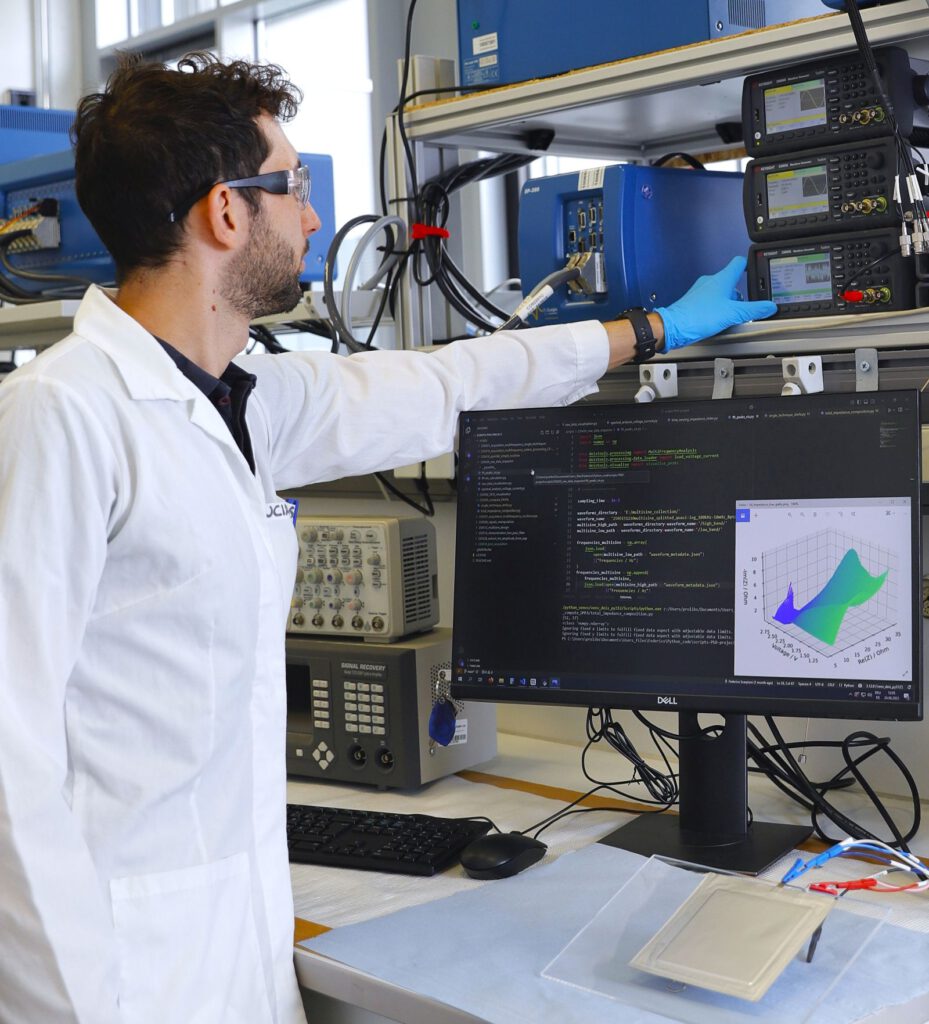Researchers at the Fraunhofer Institute for Manufacturing Technology and Advanced Materials IFAM have introduced a dynamic impedance spectroscopy method that measures battery status in real time during operation. Traditional impedance spectroscopy requires batteries to remain at rest and can take up to 20 minutes to produce actionable data on state of charge (SoC) and state of health (SoH). The new approach overlays a multi-frequency test signal onto the regular charging or discharging current, enabling continuous analysis without interrupting vehicle use.
In this system, current and voltage responses are sampled at rates up to one million times per second. A dedicated data processing system applies specialized algorithms to reduce the volume of raw data while preserving essential information. The processed signals yield detailed impedance curves that reveal physical and chemical processes inside each cell. By tracking impedance evolution, the method can predict individual cell lifespan and detect safety issues more accurately and quickly than existing battery management displays, which respond more slowly and with lower resolution.
“First, dynamic impedance spectroscopy opens up new possibilities for optimizing battery management, thereby extending the batteries’ lifespan. It also paves the way for these batteries to be used in safety-critical applications,” explains Hermann Pleteit, who heads up the project.
The enhanced measurement capability allows battery management systems (BMS) to identify locally overheated cells in real time and either reduce power or deactivate the affected cell immediately. This rapid response replaces external temperature sensors, which detect thermal events only after damage may have begun. The technology also offers flexibility for charging strategies: vehicles can receive high-power charging during short stops with continuous impedance monitoring to avoid thermal stress, or slower charging over longer periods to minimize overall battery wear.
Beyond electric vehicles, the method can support renewable energy storage systems—such as wind and solar installations—and emerging applications in aviation and shipping. The technique is compatible not only with lithium-ion cells but also with next-generation chemistries including solid-state, sodium-ion, and lithium-sulfur batteries.
Source: Fraunhofer Research News
















